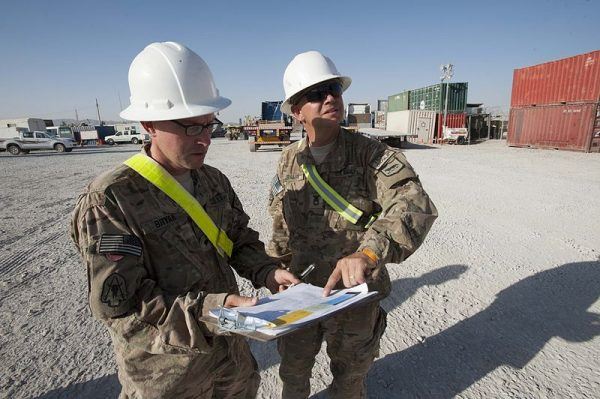As we enter 2019, the U.S. involvement in Afghanistan has gone on for almost two decades. Think about that for a moment. But our involvement in Afghanistan goes back even farther. Our first involvement in Afghanistan was during the proxy war with the U.S.S.R. Not so clandestinely, the U.S. supplied the Afghan Mujahideen. In a continuation of the Cold War between the U.S.S.R. and the Allies, the U.S. saw an opportunity to weaken the Soviet forces in Afghanistan by assisting the rebel fighters that opposed the Soviet occupation.
After the ten-year Soviet occupation and withdrawal, al-Qaeda and the Taliban continued to rebel against the sitting government which was in shambles and trying to consolidate its ever-weakening hold on the country.
The first real engagement of U.S. forces happened after al-Qaeda, under the guidance of Osama bin Laden, attacked the World Trade Center on September 11, 2001. The attack on 9/11 was not attributed to any Afghans. The tactical leader, Mohammed Atta was Egyptian, and the rest of the fifteen terrorists were Saudi nationals.
President George W. Bush vowed to “win the war against terrorism,” with attention on Afghanistan, the Taliban, and Osama bin Laden in Afghanistan. The U.S. called for the Taliban regime to “deliver to the United States authorities all the leaders of al-Qaeda who hide in your land,” and with the president’s speech, the U.S. entered the war against terrorism and that war was centered in Afghanistan.
Since that beginning, the U.S. has been in Afghanistan as part of a coalition to fight al-Qaeda, then the Taliban. Goals and reasons have shifted over the years. Significant policy changes have occurred as well as our commitment to the fight in Afghanistan as U.S. administrations changed. What was an operation to get Osama bin Laden and the al-Qaeda terror organization he led shifted into helping the Afghan government resist the fundamental Taliban rebels fighting to establish their rule and ideology over the country.
Shifting Strategies
Under the Bush administration, the battle in Afghanistan expanded and resulted in the surrender of the Taliban in December of 2001. Also, in December of 2001 the Afghan-led forces engaged in an extended fight against al-Qaeda militants in Toro Bora, a cave complex high in the mountains southeast of Kabul. That operation was not led by U.S. forces, and bin Laden escaped to Pakistan.
Policy Shift: U.S. Leads the Operation but Loses Focus
Later in that same month Operation Anaconda, a large-scale ground assault and the largest operation since Tora Bora, commenced against an estimated eight-hundred al-Qaeda and Taliban fighters in the Shah-i-Kot Valley (Paktia Province). Approximately two-thousand U.S. and one-thousand Afghan troops were committed to the battle.
Although it appeared that more extensive military operations were in the future assuring the destruction of the terrorist group al-Qaeda and their supporters in the Taliban, the U.S. focus shifted again. Military and intelligence resources focused on Iraq and Saddam Hussein, who was now billed as the more significant threat to the U.S.

A Marshall Plan for Afghanistan
President George W. Bush called for a rebuilding of Afghanistan. The logic was: if Afghanistan is a better and safer place, then terror organizations like al-Qaeda and the Taliban which had become more and more brutal would not be able to take hold as they did in an impoverished Afghanistan. In a speech at the Virginia Military Institute (VMI) in 2002, President Bush said, “By helping to build an Afghanistan that is free from this evil and is a better place in which to live, we are working in the best traditions of George Marshall.”
But in the 17 years the reconstruction effort has been going on, the war-torn country has wasted billions. Special Inspector General for Afghanistan Reconstruction (SIGAR) is the U.S. government’s leading oversight authority on Afghanistan Reconstruction; John Sopko leads the agency.
In a recent interview he said, “We can’t rebuild it into a little America. I think that was one of the problems. We wanted to turn this into Kansas. It is one of the most corrupt countries in the world. We probably contributed to it by pouring too much in, too fast, with too little oversight,.” He added, “Basically, dollar bills were falling from the sky.”
Policy Shift Again
In 2003 then-Secretary of Defense Donald Rumsfeld declared that combat missions in Afghanistan were essentially over with the defeat of al-Qaeda and the Taliban. This coincided with President Bush’s declaration that combat operations in Iraq had also ceased. At that time the U.S. had approximately 8,000 troops on the ground in Afghanistan.
From 2003 until 2006, the focus was nation-building and reconstruction. Elections were held, and the democratically-elected government of Hamid Karzai was recognized. But over the next ten years, U.S. troop numbers incrementally increased to over 100,000.
A New Administration and New Goals
President Barack Obama, although campaigning on withdrawing troops, sent 17,000 more troops to the war zone, all the while stating he would stick to his originally-announced timeline of withdrawing most combat forces from Iraq by the end of 2011.
As of January 2009, the U.S. had approximately 37,000 troops in Afghanistan. Robert Gates, secretary of defense under President Obama, said that the Afghanistan mission had always been too broad, and he wanted the effort to focus on establishing limited goals such as preventing and limiting terrorist safe-havens. A goal that mirrored the original reason for going into Afghanistan.
Policy Shift Again
The announcement of troop reductions was met with a resurgence of attacks by the Taliban. Although wanting to focus on a smaller mission, the attacks were met with an increase in troop numbers. The 37,000 troops increased to 50,000 then 74,000 and eventually over 100,000 by the end of 2010.
U.S. No Longer a Welcomed Guest
The Taliban started negotiating with the U.S. in 2012, but the sitting Afghan government was not a party to the negotiations, which further widened the gap between the Karzai government and the U.S.
During this time, the U.S. was accused of several incidents that enraged the Afghan people, such as the Quran- burning, civilian deaths due to indiscriminate airstrikes, and a rogue U.S. soldier killing 16 civilians. On the night of March 11, 2012, 16 Afghan civilians (nine children, some as young as two years old, four women and three men) were shot and killed in the villages of Balandi and Alkozai near Camp Belambai, Kandahar Province. I was deployed at Kandahar as a contractor when this event occurred. The attacks on our location increased immediately, and hatred of American forces was intense.
President Karzai demanded the U.S. as well as all foreign troops be confined to their military bases and not operate in the villages. These new constraints caused another policy adjustment with yet another U.S. defense secretary, Leon Panetta, announcing plans to conclude combat missions by as early as mid-2013. The policy shift was now primarily a security assistance role. This is the third time administrations had announced a cessation of combat operations in Afghanistan.
Obama Announces U.S. Troop Withdrawal
The on again/off again withdrawal of troops continued as President Obama announced a timetable to remove the vast majority of U.S. forces from Afghanistan by the end of 2016. He planned to limit the number of troops in the country to just fewer than 10,000.
It is important to note that after the attacks on the World Trade Center in 2001, General Tommy Franks, then-commanding general of Central Command (CENTCOM), informed President George W. Bush that in order to be successful in Afghanistan, the U.S. would need a conventional force of 60,000 troops, and six months of preparation. It would take nine years to reach that level troop deployment, and by that time the situation had significantly deteriorated.
A New Administration and a New Policy
President Donald Trump sent 3,000 additional troops at the requests of his advisors. This added to the 11,000 that were stationed in Afghanistan. As he announced during his campaign, Trump’s focus was to bring U.S. troops home and let other countries fight their own battles. One day after announcing the withdrawal of U.S. forces from Syria, he announced that 7,000, or half of the U.S. troops in Afghanistan, would be returning home.
So Why Were We There?
A thumbnail sketch of rationales for our involvement in Afghanistan goes something like this:
In our earliest commitment, we were still in a Cold War footing and supporting fighters in Afghanistan against our biggest perceived foe: the U.S.S.R. That reason shifted to kill or capture al-Qaeda leader Osama bin Laden and the destruction of the terrorist group.
Over the years, al-Qaeda was functionally either destroyed or run into Pakistan where the U.S. was hard-pressed to do anything about it. Osama bin Laden was killed May 2, 2011, during a clandestine operating inside Pakistan by U.S. Special Operation Forces, namely SEAL Team Six. That reason for going into Afghanistan was over.
The Taliban had become a state in of itself and several countries including the U.S., Pakistan, Russia, and others started negotiations with them to end the war. Unfortunately, many of these negotiations with the Taliban did not include the sitting Afghan government. Outside players were deciding the future of a sovereign country’s government with them not even at the table.
This has been the continuing story of the U.S. in Afghanistan. We are fighting the Taliban, a government within the country, although not the official one, for the benefit of the sitting Afghan government. As from the beginning, this has been a civil war between two competing government entities within Afghanistan.
Another question one must ask is: What danger does the Taliban pose to the U.S.? They are involved in a fight inside Afghanistan, not the U.S., and the U.S. would be hard-pressed to make a case that they are a threat to our homeland or our people.
It is also the case that for all the troops lost and years fought, infrastructure built and destroyed, the Taliban are in control of more territory than ever. Our on again/off again efforts in Afghanistan have resulted in very little.
The U.S. tried to fight this war in Afghanistan by incrementally sending troops, then pulling them out, only to send the troops back in again with shifting and ever-changing goals. The strategy in Afghanistan has been “Wash, Rinse, and Repeat,” with no end in sight. Not exactly how you win a war.
Does terrorism still pose a threat? Of course it does, but not to the extent we need to deploy thousands of troops halfway across the world, providing them with targets and spending billions. To mitigate what? This, as in Syria, is a mission looking for a reason to exist.
The Decision to Pull More Troops
President Trump’s decision to pull more troops out is much in line with what presidential candidate Trump had been saying on the campaign trail. With increasing frustration and the lack of progress, the cost in lives, money, equipment, and with the Afghan government considered one of the most corrupt governments on the planet, the U.S. is narrowing its focus once again and coming home.
Is pulling the troops out all because of yet another shift in policy and a growing weariness in America’s longest war? Does it serve the best interest of the U.S. to push the Taliban out and continue to support the sitting Afghan government?
If those questions are answered in the affirmative, and I think they probably are, then they may be another option, and I will cover that in part three of this series: A Way Forward in Afghanistan.
















